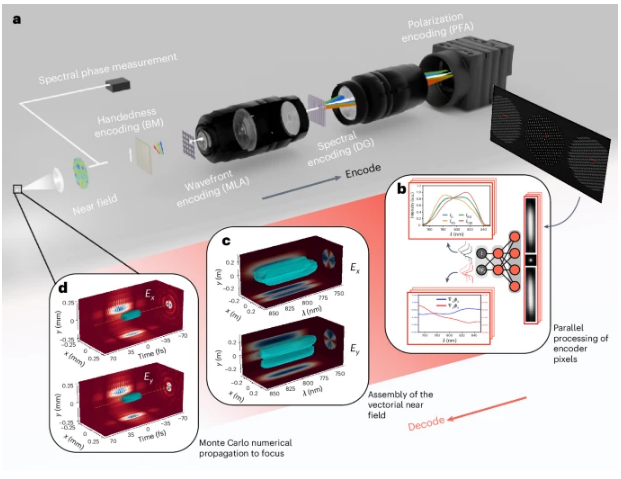
英国牛津大学Andreas Döpp团队研究了千瓦激光脉冲单次时空矢量场测量。这一研究成果发表在2025年6月26日出版的《自然—光子学》杂志上。
对光的各种自由度的控制是现代物理学和技术的基础,从量子光学到电信。超强激光代表了这种控制的巅峰,将光集中到极端强度,在这种强度下,电子在单个光学周期内以相对论速度振荡。这些特殊的条件为探索光-物质相互作用的基本方面和开发变革性应用提供了独特的机会。然而,对强超短激光的精确表征已经落后于人们产生它们的能力,这给推进激光科学及其应用带来了瓶颈。
研究组介绍了第一种用于强超短激光脉冲的单次矢量场测量技术,该技术为其完整的时空和偏振结构提供了前所未有的见解,包括量化的不确定性。该方法通过利用这些激光脉冲的固有特性,将整个矢量场有效地编码到二维探测器上,从而实现了实时表征。
研究组在从高重复率振荡器到拍瓦级激光器的系统上展示了它的能力,揭示了微妙的时空耦合和偏振效应。这一进步弥合了激光物理理论和实验之间的差距,为模拟提供了关键数据,并加速了高场物理、激光-物质相互作用、未来能源解决方案等领域新应用的发展。
附:英文原文
Title: Single-shot spatiotemporal vector field measurements of petawatt laser pulses
Author: Howard, Sunny, Esslinger, Jannik, Weie, Nils, Schrder, Jakob, Eberle, Christoph, Wang, Robin H. W., Karsch, Stefan, Norreys, Peter, Dpp, Andreas
Issue&Volume: 2025-06-26
Abstract: The control of light’s various degrees of freedom underpins modern physics and technology, from quantum optics to telecommunications. Ultraintense lasers represent the pinnacle of this control, concentrating light to extreme intensities at which electrons oscillate at relativistic velocities within a single optical cycle. These extraordinary conditions offer unique opportunities to probe the fundamental aspects of light–matter interactions and develop transformative applications. However, the precise characterization of intense, ultrashort lasers has lagged behind our ability to generate them, creating a bottleneck in advancing laser science and its applications. Here we present the first single-shot vector field measurement technique for intense, ultrashort laser pulses that provides an unprecedented insight into their complete spatiotemporal and polarization structure, including quantified uncertainties. Our method efficiently encodes the full vector field onto a two-dimensional detector by leveraging the inherent properties of these laser pulses, allowing for real-time characterization. We demonstrate its capabilities on systems ranging from high-repetition-rate oscillators to petawatt-class lasers, revealing subtle spatiotemporal couplings and polarization effects. This advancement bridges the gap between theory and experiment in laser physics, providing crucial data for simulations and accelerating the development of novel applications in high-field physics, laser–matter interactions, future energy solutions and beyond.
DOI: 10.1038/s41566-025-01698-x
Source: https://www.nature.com/articles/s41566-025-01698-x
